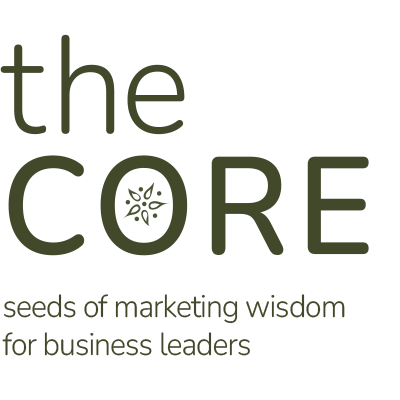Every successful company started as an idea.
Whether it was a concept sparked by a business conversation or originally written down on the back of a napkin, every brand has a story to tell about how it evolved from idea to impact. As a marketer or business leader, your ability to tell that story (i.e., brand storytelling) affects how well your potential customers remember who you are, connect with your mission, and care about your products or services.
Brand storytelling not only explains how you differ from your competitors; it also humanizes your brand in a way that allows people to relate to it. It helps customers understand who you are and why your business exists.
For example, Green Apple Strategy was founded as a marketing and PR agency that builds marketing strategies with the entire business in mind. Rather than offering “one-off” marketing projects like creating a website or managing social media, we come alongside businesses to develop and implement marketing strategies with their “core” business areas in mind. As a result, a big part of our work has been helping businesses find their “story” and tell it effectively in today’s digital age.
Develop a Blueprint for Memorable Brand Storytelling
After working with dozens of clients in various industries over the years, here are a few best practices we’ve learned when it comes to developing your brand’s story:
Discover your why.
To borrow the famous adage from Simon Sinek, “People don’t buy what you do, they buy why you do it.” Discovering your why when marketing your business should always be step one. Rather than leading with your products, services, or solutions, take a step back and examine the motivation behind your actions. It’s more than just making a profit (or at least, it should be). It’s the big, bold vision that motivates your company.
Help your audience see themselves in your story.
While your brand story unpacks your origin and unique differentiators, it’s essential to remember that the best marketing makes your audience feel like the hero in the story. It’s important to make sure your audience can see themselves in your brand story. That means highlighting their specific challenges or obstacles and why you care about helping them solve the problem.
Make sure your brand story aligns with your business goals.
Your brand story should align with your business goals and integrate into all areas of your business—including marketing, sales, and all internal and external communications. Potential goals to build your story around include revenue growth, clarifying what your business offers, differentiating from other companies, or growing brand awareness.
Don’t forget to be human.
Remember, people connect with people. Your brand story should have personality. Boring books don’t attract readers. In the same way, your brand story should be inspired by the presence of people who participate and develop your company — written with the specific personality that represents your company.
Questions to Help With Brand Storytelling
As we work with brands, we get to know their history, unique value proposition, ideal target audience, and dreams for the future. Each of these impact the brand story we craft. While it’s important to create a unique narrative, here are a few helpful questions that could help you identify the important elements and narrative arc of your brand story:
1. How and why was your company founded? What inspired its creation?
2. What were the specific challenges or problems your company sought to address in the market? How does that connect with the problems you seek to address today?
3. Were there any significant events, experiences, or turning points that shaped the early days of your company?
4. What were the core values, principles, or beliefs that guided the founders in establishing the company?
5. Did your company experience any transformative moments or breakthroughs that set it apart from competitors?
6. Who is your target audience? How does your product or service positively impact the lives of your customers?
7. What is your company’s vision for the future? How do you plan to evolve and make a positive impact?
Take Your Brand Storytelling to the Next Level
Creating a compelling brand story is worth it because it becomes something to reinforce in every marketing campaign. If you’re struggling to identify a brand story or marketing message that resonates with your audience, our team can help. Reach out to our team to learn more about our process or schedule a time to chat.












